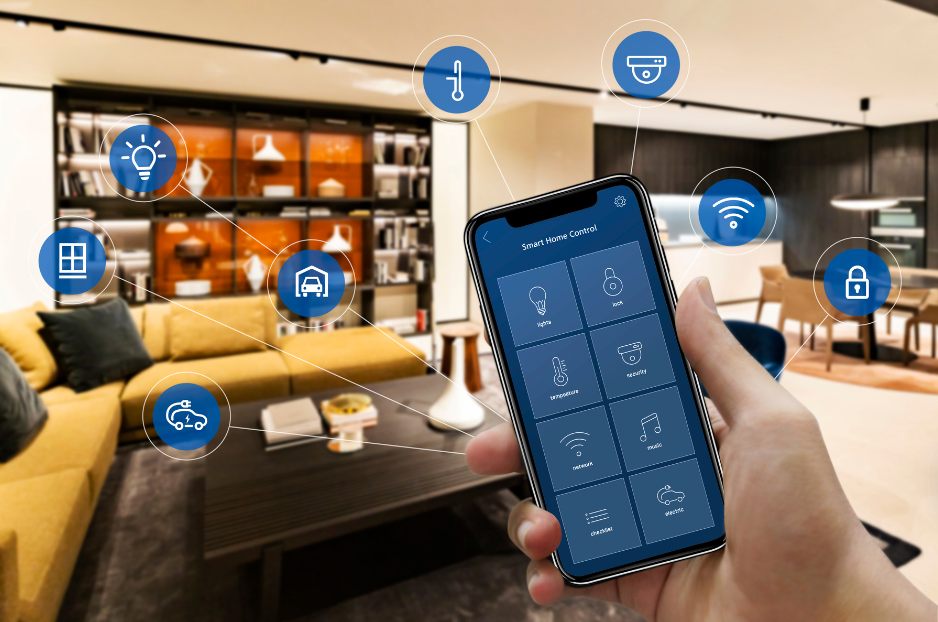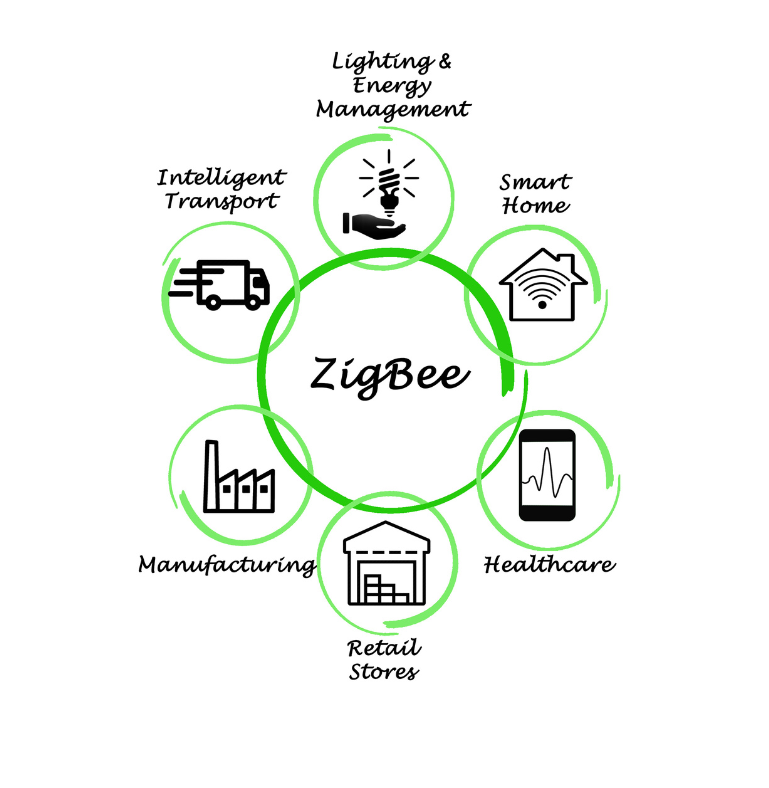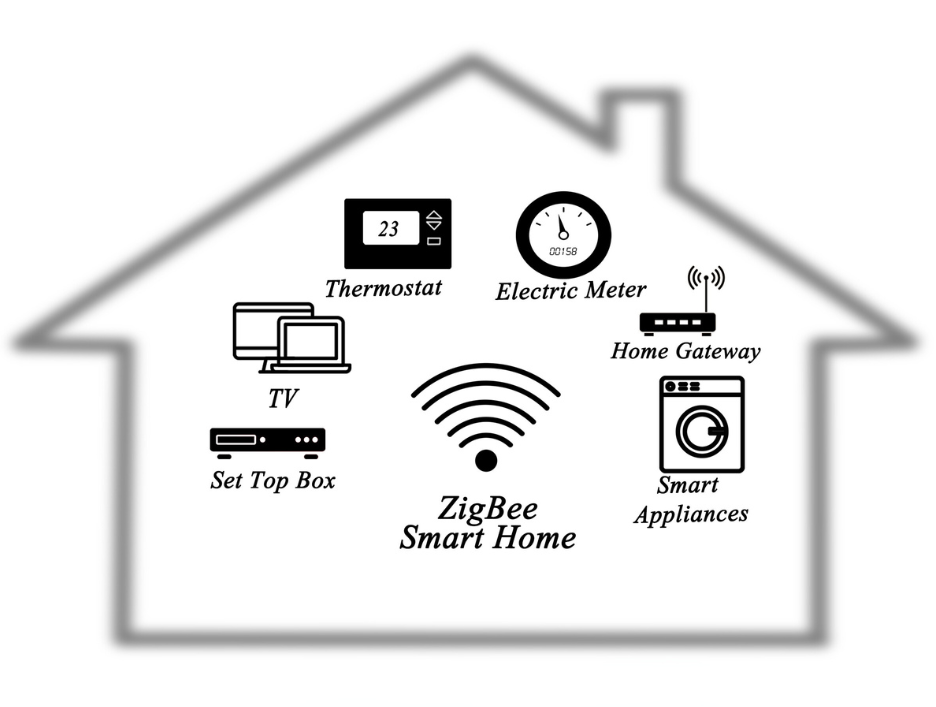If you’ve ever wondered how your smart devices communicate with each other, Zigbee might well be the answer you’ve never heard of before. From your smart lights to your smart thermostat, Zigbee is the invisible thread that ties your smart home together. But what is Zigbee exactly? How does it work, and what purpose does it serve?
In this post I’ll look at answer these questions as well as exploring which devices are using this technology around the home and work environments.

What Is Zigbee – By Definition
To define Zigbee in a brief summary, it is a wireless technology that allows your smart devices to ‘talk’ to each other. To go a bit deeper, it is a wireless protocol used primarily in home automation systems.
Consider Zigbee as the efficient communicator within your smart home. It operates with a whisper, not a shout, ensuring that devices like light switches and sensors can exchange information without consuming much power. It’s an ideal solution for those devices that need to transmit small amounts of data frequently, while maintaining energy efficiency.
Think of it as a universal language for your smart devices. It’s great for devices that need to send small amounts of data over a large area, like your smart home devices.
Because it doesn’t use much power, it is a much more energy efficient delivery system for smart devices than other types of Wireless tech.
What Are The Specifications Of Zigbee?
Zigbee isn’t just a single technology; it’s a family of specifications, each designed for specific types of devices and applications. These specifications are built on the IEEE 802.15.4 standard, which is a framework for low-rate wireless personal area networks (WPANs). Zigbee takes this framework and adds layers of functionality designed for different use cases.
- Zigbee PRO:
This is the powerhouse of the Zigbee family, designed to form the backbone of the Internet of Things (IoT). Zigbee PRO supports robust, reliable networks that enable device-to-device communication. It’s perfect for applications where many devices need to communicate with each other, such as in a smart home or industrial IoT setting. One of the standout features of Zigbee PRO is its support for Green Power, a feature that enables the use of energy-harvesting or self-powered devices. This means devices can operate without batteries or an AC power supply, making your smart home even more eco-friendly.
- Zigbee RF4CE:
This specification is designed for simple, two-way device-to-device control applications. It’s a streamlined version of Zigbee, perfect for devices that don’t need the full-featured mesh networking functionalities offered by Zigbee PRO. Think of Zigbee RF4CE as the perfect solution for simple remote controls or other devices where you just need a simple, reliable wireless connection.
- Zigbee IP:
This specification is optimized for IPv6-based full wireless mesh networks. It’s designed to provide internet connections to control low-power, low-cost devices. Zigbee IP is the bridge between your smart devices and the wider internet, allowing for remote control and monitoring of your devices from anywhere in the world.
Each of these specifications operates on 2.4 GHz, 900 MHz, and 868 MHz frequencies, providing a range of options for different devices and applications. The specifications are maintained and updated by the Connectivity Standards Alliance (formerly the Zigbee Alliance), ensuring they stay relevant as technology evolves.

What Is Mesh Networking?
Mesh networking is a way of connecting devices in a network where each device (or node) can communicate with all others directly or indirectly through the network. In a Zigbee mesh network, if one device fails, the others can still communicate, making the network self-healing and highly reliable. This means your smart home stays smart, even if one device goes offline.
How Does Zigbee Work and how does it Use Mesh Networking?
Zigbee uses this mesh networking to connect devices. In a Zigbee network, there’s a coordinator node that controls other nodes. If one node fails, the coordinator and other nodes can communicate by linking to another node within range. This makes Zigbee networks robust and adaptable, perfect for a smart home where devices need to communicate seamlessly.
How Does Zigbee compare to Z-Wave?
Zigbee and Z-Wave are both wireless technologies used in smart homes, but they have some differences. Zigbee operates at higher frequencies (2.4 GHz) compared to Z-Wave (900 MHz), which can lead to a bit more interference but also allows for a higher data rate. Zigbee also supports more devices on a single network compared to Z-Wave’s 232 device limit.
The trade off here, is that while Zigbee is more powerful and can connect to more devices, it does use more power than Z-wave, and it can interfere with other WiFi networks and devices.
What Is The Connectivity Standards Alliance?
The Connectivity Standards Alliance (CSA), formerly known as the Zigbee Alliance, is an organization that works to simplify wireless product integration. They create standards for reliable, secure, low-power, and easy-to-use wireless communication. The CSA ensures that Zigbee devices from different manufacturers can work together, making your smart home more integrated and user-friendly.
How Is Zigbee Used In The Home And Workplace?

Here are some smart devices and companies that use Zigbee in the home and workplace:
- Amazon Echo: Amazon’s smart speaker uses Zigbee to connect to other smart home devices.
- Philips Hue: These smart lights use Zigbee to connect to each other and to the Hue Bridge.
- SmartThings Hub: This smart home hub from Samsung uses Zigbee to connect to a wide range of smart devices.
- Belkin WeMo: This range of smart plugs and switches uses Zigbee for connectivity.
- Ikea Tradfri: Ikea’s smart lighting range uses Zigbee to connect the lights to the Tradfri Gateway.
- Comcast: Uses Zigbee in their set-top boxes and home gateways.
- Honeywell: Uses Zigbee in their smart thermostats and security systems.
- Huawei: Uses Zigbee in their smart home solutions.
- Smart meters: Many utility companies use Zigbee in their smart meters for monitoring and controlling energy use.
Why Is Zigbee Important For A Smart Home?
Can you imagine trying to connect all your smart home devices with ethernet cables? It just couldn’t happen. Wireless tech is essential for the smart home, but standard WiFi that controls the Internet of Things, is overkill for the low power and data needs of smart devices. That is why Zigbee is a bit of a hero here.
Zigbee is important for a smart home because it allows different devices from various manufacturers to communicate with each other. This interoperability makes it easier to automate your home and control all your devices from a single hub. Plus, Zigbee’s mesh networking provides a reliable and robust network for your smart home. This means your smart home is more resilient, flexible, and user-friendly.
So, that’s Zigbee in a nutshell! It’s the unsung hero of our smart homes, working behind the scenes to keep our devices connected and our lives convenient.

